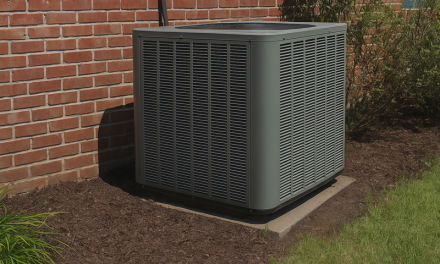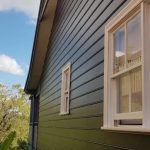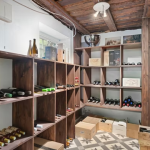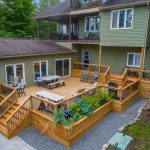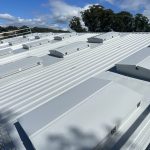The Complete Guide to Natural Ventilation for Sheds and Workshops

If you’ve ever spent any length of time in a shed or workshop during the Australian summer, you’ll know how stuffy it can get. Hot air can build up quickly to make it feel like an oven, tools can rust seemingly overnight, and mould can creep into the ceiling, especially after heavy rain.
Unfortunately, a lack of airflow can make even the best-built shed feel damp and uncomfortable. That’s why it is so important to have good natural ventilation throughout it.
This guide will explain how to keep your shed or workshop fresh, dry, and safe all year round, without relying on powered fans or air conditioning. In it, you’ll learn what natural ventilation is and why it is important. We will also show you how to use vents, windows, and smart design to create a pleasantly well-aired space.
It doesn’t matter if you’re building a new shed or upgrading an old one. These practical tips will help you enjoy a more comfortable workspace, regardless of what the Australian climate throws at it.
What is Natural Ventilation and Why is it so important for Sheds?
Natural ventilation is the simple concept of allowing fresh air to move in and out of a space without the use of fans or powered systems. It utilises natural airflow, wind pressure, and temperature differences to maintain a cool and comfortable environment in your shed or workshop.
Good ventilation helps reduce condensation, prevents mould and rust from forming, and keeps tools, timber, and stored items in better condition than they would otherwise be. Proper airflow can even help prevent fumes from paints or fuels that often build up inside enclosed areas.
If you’re building or renovating your shed and you want to maximise its airflow, it’s worth learning about Airocle’s natural ventilation solutions. They offer smart systems that harness Australia’s climate to improve air circulation in industrial and domestic sheds.
The beauty of these systems is that they don’t rely on electricity. They can also be designed to suit both new sheds and older workshops that need an upgrade.
How Do I Naturally Ventilate My Shed or Workshop?
So, now you know why natural ventilation is so important in your shed, what is the best way to create it?
Here are four ways you can do so.
1. Set Up Cross Ventilation
To create natural ventilation in your shed, a good starting point is to use louvre windows and wall vents. Louvres allow you to adjust the amount of air that comes in while still keeping the space weatherproof. They’re especially useful in coastal regions, where salty air can cause corrosion. Wall vents, meanwhile, are a low-maintenance way to encourage natural airflow.
When installing them, position vents or windows low on one side to let cooler air in, and place outlets high on the opposite side to release warmer air. This is the most effective way to keep air moving. Together, they will help prevent heat pockets and improve overall air circulation.
2. Use Roof Ridge Vents and Whirlybird Vents for Airflow
Roof ridge vents and whirlybirds are some of the most popular shed ventilation systems in Australia. Primarily, this is because they’re affordable, easy to install, and require almost no maintenance.
Ridge vents run along the top of your roofline and provide a pathway for hot air to escape naturally from the room. Because heat rises, they’re a great passive cooling solution that works all year round.
Whirlybirds, on the other hand, use the wind to spin a turbine that draws warm air out from inside. Even when there’s no breeze, temperature differences between the inside and outside of the shed help maintain gentle air movement.
If you run a workshop that deals with machinery, paints, or fuel, it is a good idea to install one or two whirlybirds. They can make a big difference to workshop air circulation, and you are bound to notice a fresher atmosphere and less lingering odour.
3. Control Condensation and Moisture Build-Up
Condensation is one of the main issues caused by poor ventilation. It occurs when warm, moist air inside your shed comes into contact with a cool surface, such as a metal roof or wall. Over time, this can cause rust, mould, and damage to stored items.
The best way to fight it is by keeping the air moving. As mentioned, a well-designed ventilation system removes humid air and replaces it with dry, fresh air. Additionally, proper shed insulation can also help when paired with good ventilation. That is because insulation prevents rapid temperature changes, which reduces condensation.
Just make sure that any insulation you install is paired with a moisture barrier to protect your materials and structure.
4. Choose the Best Natural Ventilation Options for where you live
Australia’s climate varies widely between states and regions. Therefore, your particular ventilation needs will differ depending on where you live.
For instance, if you live within inland areas of hot, dry regions, temperatures can soar during the day and drop at night. Therefore, combining ridge vents, whirlybirds, and louvre windows will help keep your shed cool without relying on powered systems. Good roof insulation will also help to stabilise internal temperatures and reduce the amount of heat entering through the roof.
Conversely, if you live in humid or coastal areas, moisture in the form of condensation is likely to be your biggest challenge. Using vents with mesh screens will help to keep out salt and insects while still allowing airflow. The shed should also be built with materials that resist rust and corrosion to ensure long-term durability.
For more ideas on how to make the temperature more comfortable, check out our guide on beating the winter chill inside your shed.


